If you’ve purchased essential oils or skincare products, you might have seen the term “lavendin” instead of “lavender.” These products boast similar scents and label imagery, but it leads to an important question: what is lavendin?
Contrary to popular belief, lavendin isn’t a fake type of lavender made up for the cosmetic industry. It’s a special type of lavender hybrid.
Let’s explore the differences between lavender and lavendin, and how you can grow each plant.
Comparing Lavender vs. Lavendin:
| Lavender | Lavendin | |
|---|---|---|
| Classification | Lavandula angustifolia | Lavandula x intermedia, Lavandula hybrida |
| Alternative Names | English lavender, true lavender, common lavender | Lavandin, French lavender (misnomer) |
| Origin | Europe | France |
| Description | Blue-green stems ending in flower spikes with soft purple blooms. Plants typically grow two to three feet tall, with stalks measuring 12-16 inches long. Plants can reach 6 feet tall in ideal environments if left unharvested. Emits a sweet, floral aroma. | Silver-green stems ending in flower spikes with blue-purple blooms. Grows to 2 feet tall and 3 feet wide when mature. Emits a sweet, herbaceous aroma. |
| Uses | Lavender is commonly used in aromatherapy, mixology, and baking. | Lavendin is commonly used to make essential oils due to its quick growth rate and high yield. |
| Growth Tips | Grow in full sunlight in well-draining soil in USDA Zones 5-8. This drought-tolerant plant is not moisture tolerant and is prone to root rot. Lavender is difficult to grow from seed, and should be propagated from an established plant. | Grow in full sunlight in well-draining soil in USDA Zones 5-9. This drought and pollution tolerant hybrid is ideal for urban areas. It is not moisture tolerant and is prone to root rot. Lavendin is a sterile plant and cannot be grown from seed, only propagated cuttings. |
| Interesting Features | English lavender is currently being studied for its neurological benefits. While more studies are required to validate early results, they are promising. | Lavendin contains high levels of camphor, with cultivars classified by their camphor content. Lavandula x intermedia ‘Grosso’ has the highest concentration. |
Lavender vs. Lavendin: Key Differences
The differences between true lavender and lavendin are subtle. True lavender (English lavender) is a naturally occurring species. Lavendin is naturally occurring, but it’s a hybrid of two different lavender species.
There are also subtle differences in growth and coloration. Lavender tends to have soft purple blooms and vibrant stems where lavendin has rich blue-purple blooms and silvery green stems.
Lavender has a sweet, floral aroma. Lavendin has an undertone of camphor, which is quite strong in some cultivars. Lavendin also produces a higher yield when used for essential oils and derivatives, which means a higher production value with lower costs.
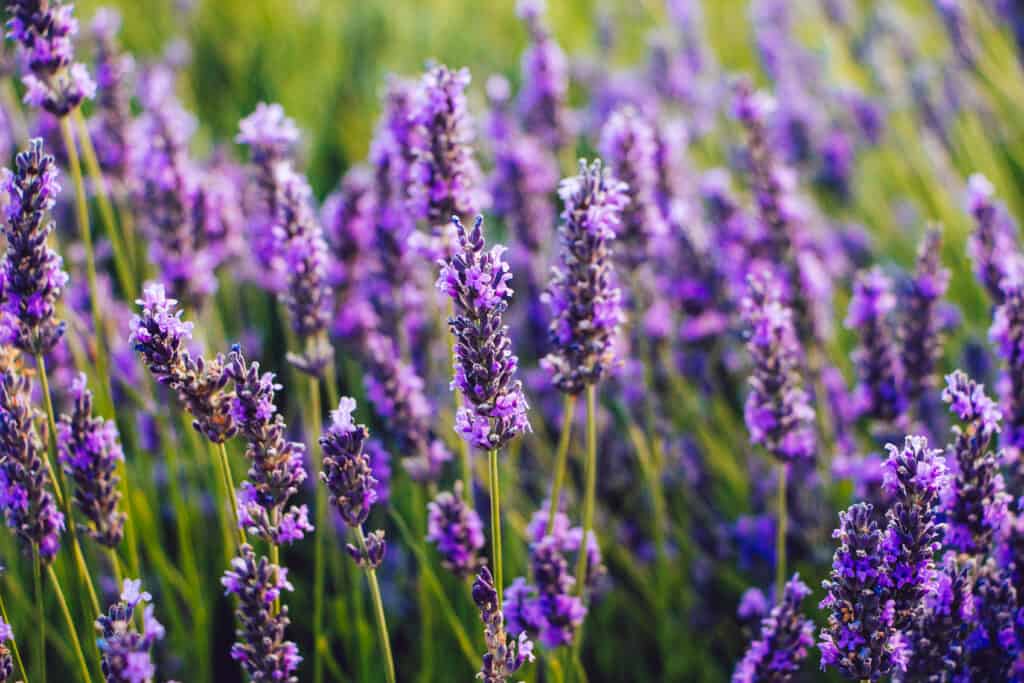
True lavender (English lavender) is a naturally occurring species with a sweet, floral aroma.
©iStock.com/ASIFE
Lavender vs. Lavendin: Classification
There are several species of lavender in the Lavandula family. Many call English lavender “true lavender,” as they consider it the original species. True lavender is classified as Lavandula angustifolia, meaning “narrow-leaf lavender.”
Lavendin is classified as Lavandula x intermedia, as it’s a hybrid between Lavandula angustifolia and Lavandula latifolia (spike lavender). The name roughly translates to “lavender across multiple channels,” indicating its two unique species. There are several Lavandula x intermedia, the most popular of which is Lavandula x intermedia ‘Grosso’ for its high level of naturally-occurring camphor. Lavendin is also called Lavandula hybrida or “lavender hybrid” and “lavandin” which appears to be a regional spelling.
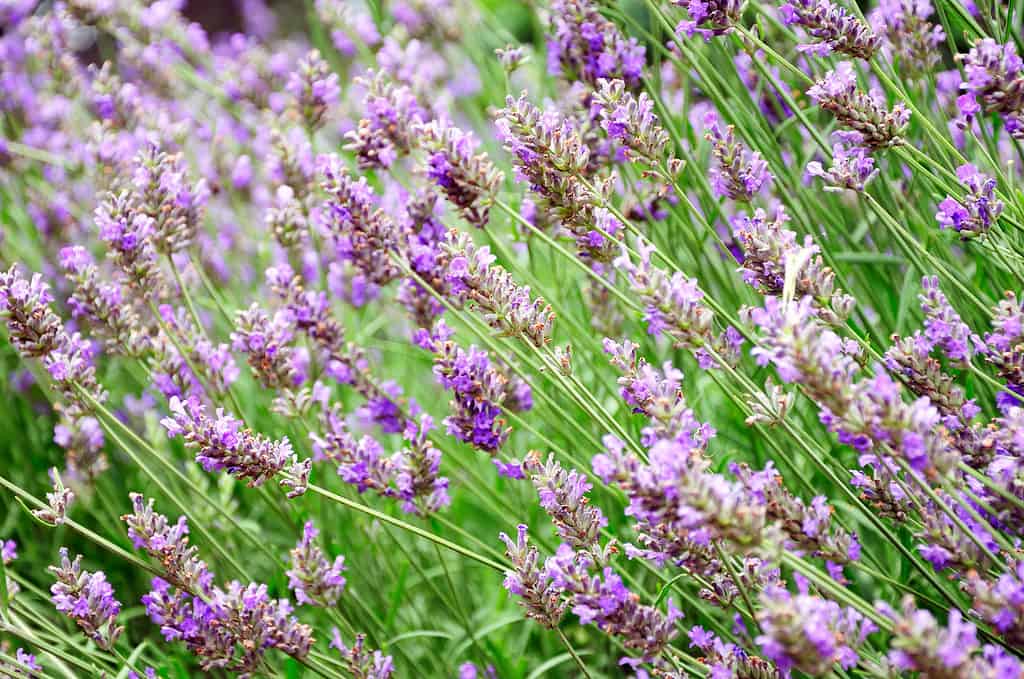
Lavendin (
Lavandula x intermedia) is a hybrid between
Lavandula angustifoliaand
Lavandula latifolia(another name is
Lavandula hybrida).
©iStock.com/alxpin
Lavender vs. Lavendin: Origin
Despite its name, English lavender is not from England. It’s from the Mediterranean region of Europe, thriving on the warm temperatures, consistent humidity levels, and frequent sunlight.
Lavender farmer Pierre Grosso discovered lavandin in France during the 1970s. At the time, France was struggling with a mycoplasma infection that still impacts France’s lavender production today. Grosso’s fields, like many farmers, were largely wiped out. He discovered a few living plants which weren’t immediately recognizable and took cuttings back for study. This was the first recorded case of Lavandula x intermedia ‘Grosso.’ Within a few years, many French lavender farmers switched to this hybrid.
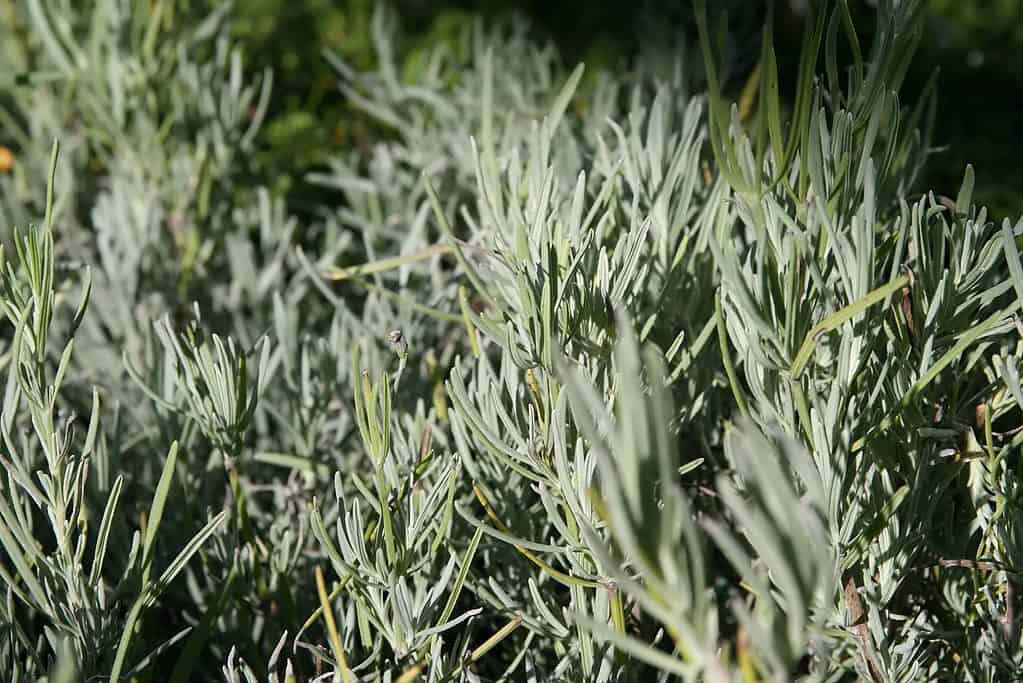
Lavendin cultivar
Lavandula x intermedia‘Grosso’ has the highest concentration of camphor content.
©Photo by David J. Stang, CC BY-SA 4.0 <https://creativecommons.org/licenses/by-sa/4.0>, via Wikimedia Commons – License
Lavender vs. Lavendin: Description
Lavender and lavendin are very similar, with a few subtle differences. English lavender has blue-green stems ending in flower spikes with soft purple blooms in a stacked, cylindrical growth pattern. Lavender typically grows two to three feet tall, with stalks measuring 12-16 inches long, though they can grow larger if left unharvested in ideal conditions. True lavender emits a sweet, floral aroma.
Lavendin has silver-green stems ending in flower spikes with blue-purple blooms. The blooms taper towards the top, forming a spike similar to the Lavandula latifolia. Lavendin grows up to two feet tall and three feet wide when mature. It emits a sweet, herbaceous aroma with notes of camphor — which is stronger in some cultivars than others.
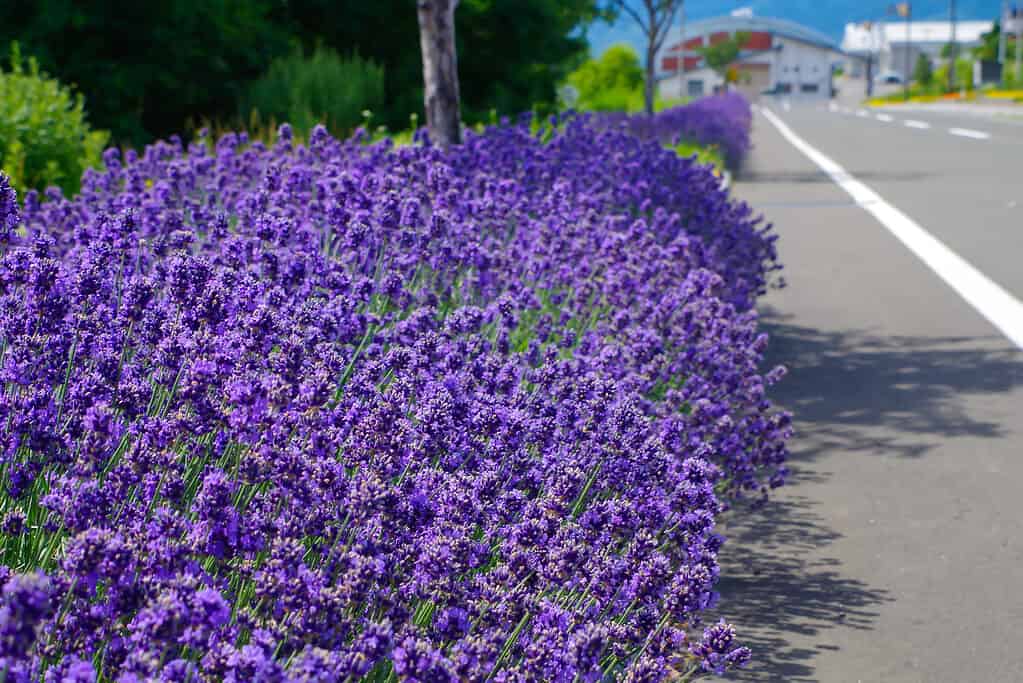
English lavender (
Lavandula angustifolia) typically grows two to three feet tall, with stalks measuring 12-16 inches long.
©ajisai13/Shutterstock.com
Lavender vs. Lavendin: Uses
LPeople often use lavender in aromatherapy to reduce stress and create a calm feeling. Many also grow lavender as an ornamental flower in gardens or dry it for indoor decor. Bakers sometimes add lavender to cakes and cookies, and mixologists include it in cocktails. It complements vanilla and lemon flavors well. Researchers conduct studies annually to explore lavender’s potential in treating various ailments, and while the findings show promise, they need to do more research.
Lavendin’s primary use is essential oil production thanks to its hardy nature and high yield. As it grows in a wider range of zones than lavender, it’s also easier to harvest.
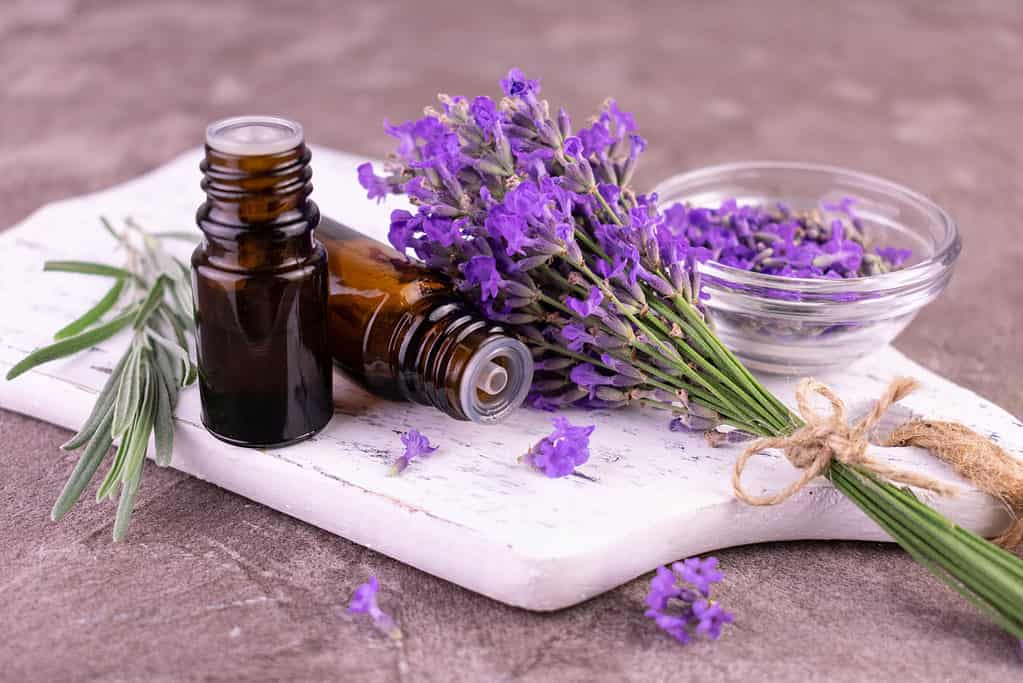
Lavendin’s primary use is essential oil production thanks to its hardy nature and high yield.
©iStock.com/Olivka888
Lavender vs. Lavendin: Growth Tips
Lavender is notoriously difficult to grow from seed, as the new plants rarely show characteristics of the parent plant. We recommend propagating and rooting a cutting from an established plant. Grow transplants in full sunlight in well-draining soil in USDA Zones 5-8. Water regularly until the plant’s complete establishment, ensuring proper drainage to prevent root rot.
Lavendin is a sterile hybrid, so you cannot grow it from seed. Take a cutting from an established plant or purchase a transplant for your garden. Grow the transplant in full sunlight in well-draining soil in USDA Zones 5-9. This hardy hybrid is drought- and pollution-tolerant, ideal for hot climates and urban gardens. Water frequently until established, ensuring proper drainage to prevent root rot.
The photo featured at the top of this post is ©
Sources
- Renaud Erica, Charles Denys, Simon James, 2001/07/01 Essential Oil Quantity and Composition from 10 Cultivars of Organically Grown Lavender and Lavandin VL - 13 DO - 10.1080/10412905.2001.9699691, The Journal of Essential Oil Research, Available here: https://www.researchgate.net/publication/232846598_Essential_Oil_Quantity_and_Composition_from_10_Cultivars_of_Organically_Grown_Lavender_and_Lavandin
- Koulivand PH, Khaleghi Ghadiri M, Gorji A. Lavender and the nervous system. Evid Based Complement Alternat Med. 2013;2013:681304. doi: 10.1155/2013/681304. Epub 2013 Mar 14. PMID: 23573142; PMCID: PMC3612440., Available here: https://www.ncbi.nlm.nih.gov/pmc/articles/PMC3612440/
- Lizarraga-Valderrama Lorena R. , Effects of essential oils on central nervous system: Focus on mental health, Phytotherapy Research, Available here: https://onlinelibrary.wiley.com/doi/full/10.1002/ptr.6854
- Olivier Sémétey, Jonathan Gaudin, Jean-Luc Danet, Pascal Salar, Sébastien Theil, Marie Fontaine, Michel Krausz, Eric Chaisse, Sandrine Eveillard, Eric Verdin, Xavier Foissac and Rebecca E. Parales, Lavender Decline in France Is Associated with Chronic Infection by Lavender-Specific Strains of “Candidatus Phytoplasma solani” Applied and Environmental Microbiology, Available here: https://journals.asm.org/doi/epub/10.1128/AEM.01507-18
Thank you for reading! Have some feedback for us? Contact the AZ Animals editorial team.






